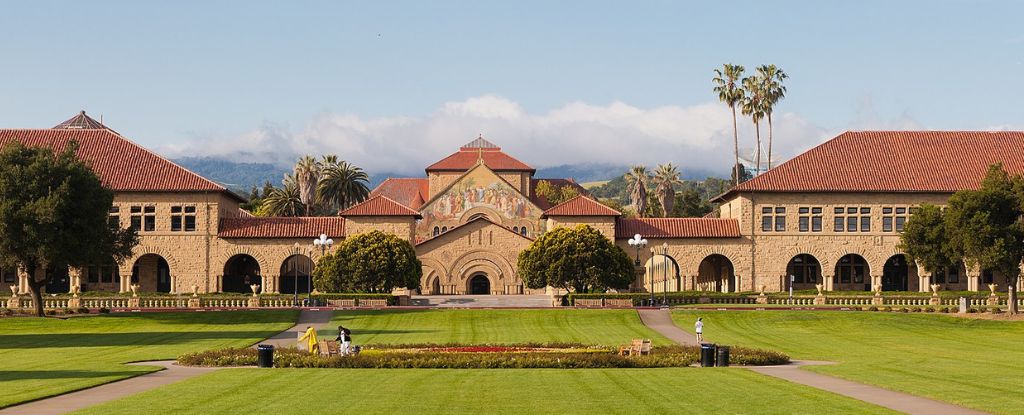Products You May Like
Within months of starting his undergraduate at Stanford University, 18-year-old Theo Baker was already on the trail of a story that would lead him to become the youngest George Polk award winner in American journalism history.
His reporting for The Stanford Daily has now culminated in the resignation of Stanford’s President: neuroscientist and billionaire Marc Tessier-Lavigne.
It all started in Baker’s freshman year when he noticed researchers online discussing whether Tessier-Lavigne’s scientific papers contained manipulated images.
Baker turned to experts for answers.
“Ultimately, most of them were too scared of Marc Tessier-Lavigne to go on the record,” he said on the Longform podcast in April.
“But Elizabeth Bik, who is sort of the world’s number one expert in spotting image manipulation in scientific imagery, and a wonderful woman, worked very closely with me and was able to go through these papers and walk through all of it with me.”
Along with two other misconduct researchers, Baker and Blik uncovered a trail of altered results in the labs of Tessier-Lavigne, covering three different institutions over the past two decades.
At this point, there is no evidence that Tessier-Lavigne himself manipulated any images in his papers on purpose – Baker himself says he doubts that this is the case.
But the fact that these errors existed under the neuroscientist’s watch and were never corrected demands skepticism. It suggests, at the very least, poor managerial practice.
“It’s not just one person in one lab going rogue. It appears to be from different periods of his life, when he used to be at different labs, at UCSF, at Genentech,” Bik told NBC News, following Tessier-Lavigne’s resignation.
As far back as 2001, Bik has identified papers authored by Tessier-Lavigne that she says show intentional photoshopping of results.
One of the most egregious allegations involves a landmark study on Alzheimer’s disease, published in 2009 by Nature, that claimed to find a potential cause for brain degeneration.
This paper came from Tessier-Lavigne’s lab at the biotech company Genentech, but the results could never be replicated.
Some researchers at Genentech told Baker that the company held an internal inquiry and found falsification of data. But Tessier-Lavigne and Genentech have since denied this review ever happened.
The paper has still not been retracted.
In light of Baker’s reporting, Stanford University opened its own internal inquiry into the matter. A panel of scientists concluded that Tessier-Lavigne’s work contained image manipulations in 2001, the early 2010s, 2015-2016, and 2021.
But the panel dismissed any allegations of fraud or misconduct on the part of Tessier-Lavigne himself. Instead, they conclude that the “unusual frequency of manipulation of research data” in the neuroscientist’s lab “suggests that there may have been opportunities to improve laboratory oversight and management”.
To this day, Tessier-Lavigne denies any “fraud or falsification of scientific data”. In a statement on his resignation, he says he regrets putting too much trust in his students.
Neurologist Matthew Schrag, who flagged some flaws in Tessier-Lavigne’s 2009 paper, told The New York Times that it’s sometimes difficult in a busy lab to verify every piece of data produced by junior researchers, but that “the accumulation of problems” under Tessier-Lavigne’s watch “does rise to a level that needs some oversight”.
Tessier-Lavigne is now expected to retract at least five of his papers, according to Baker’s reporting at The Daily.
“I’ve definitely had dreams of Marc Tessier-Lavigne more than once,” Baker admitted on the Longform podcast.
“It’s the last thing I think about when I go to sleep. And the first thing on my mind when I wake up… It’s extraordinarily stressful… First of all, this is somebody who deserves respect… And second of all, is in charge of my very community.”
Not anymore.
